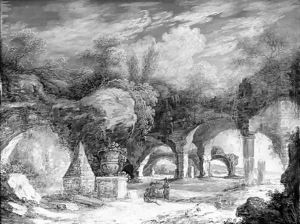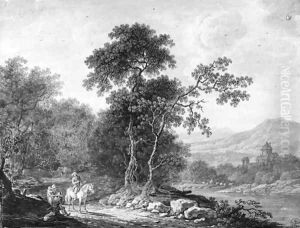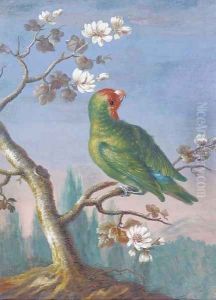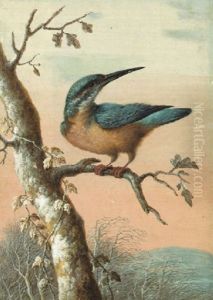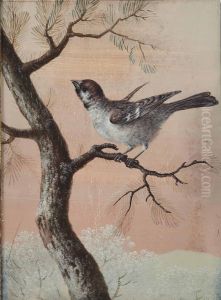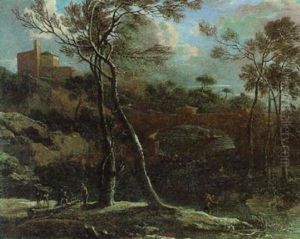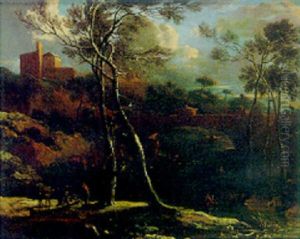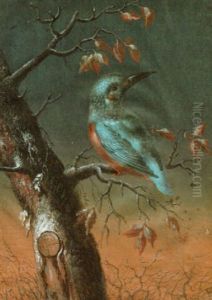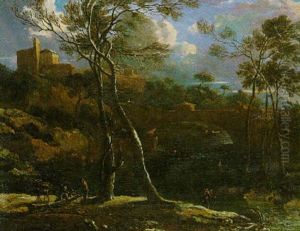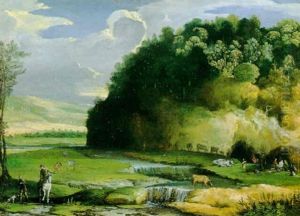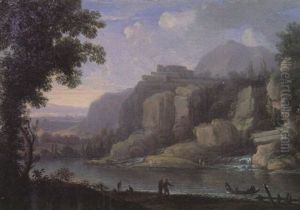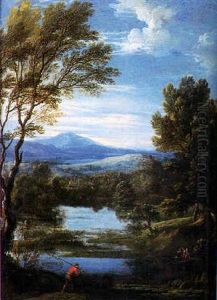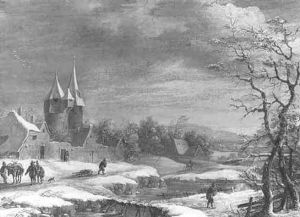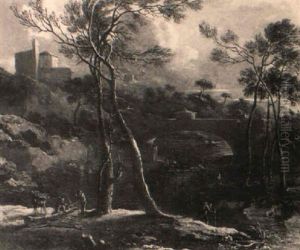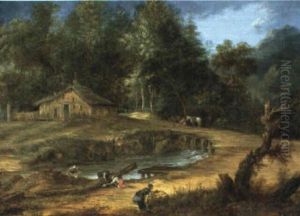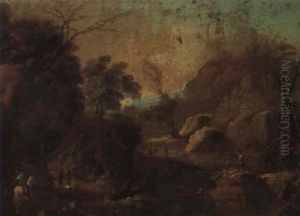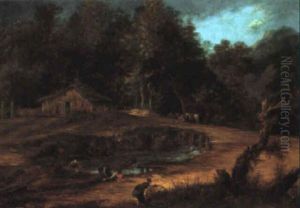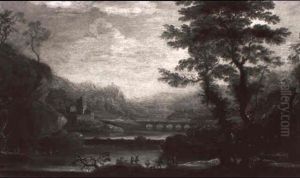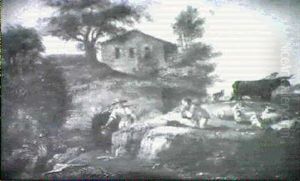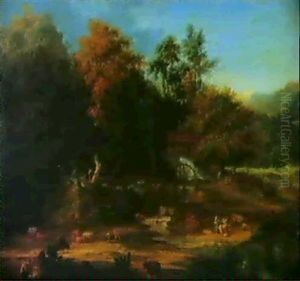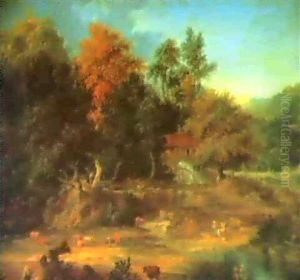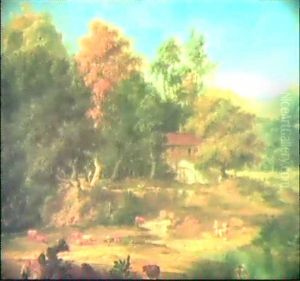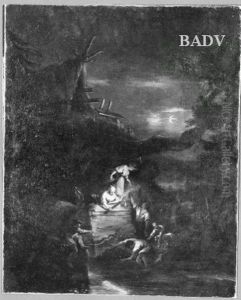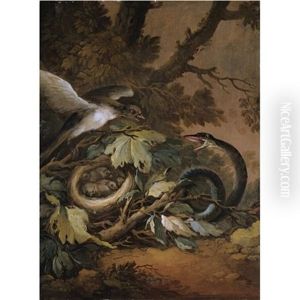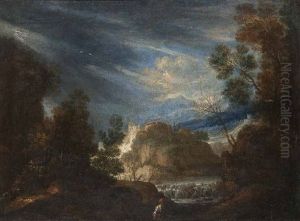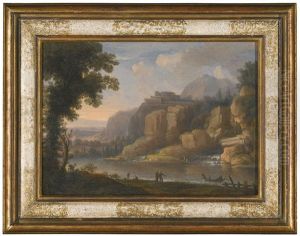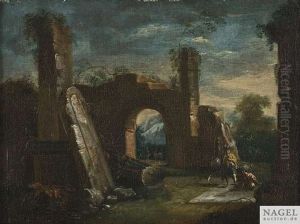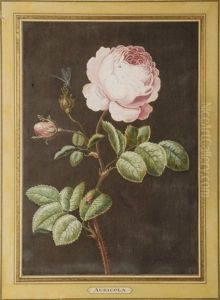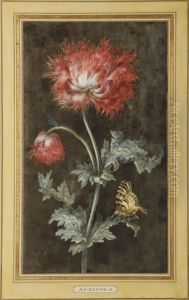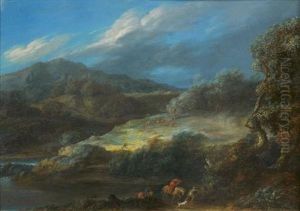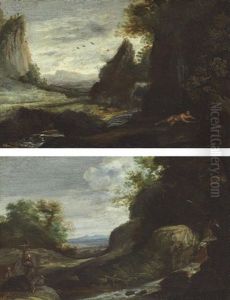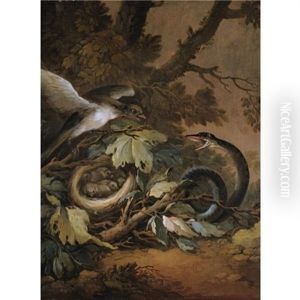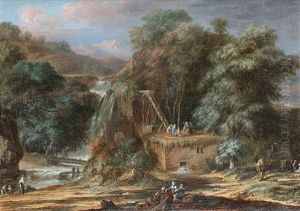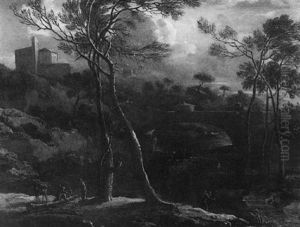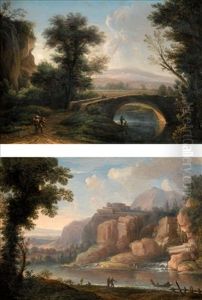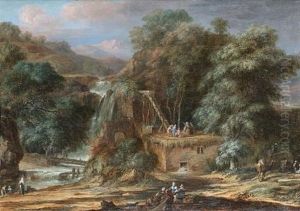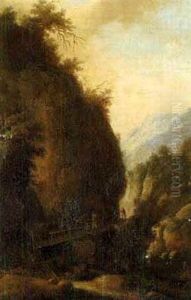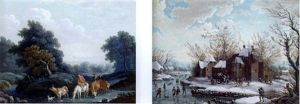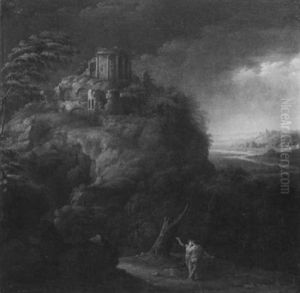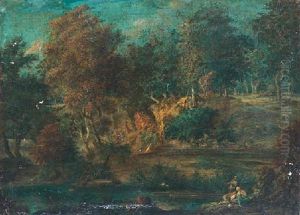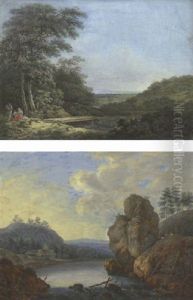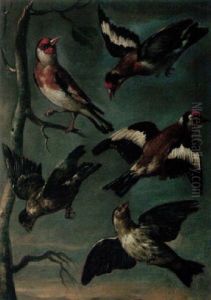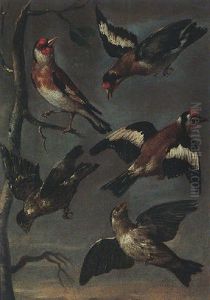Christoph Ludwig Agricola Paintings
Christoph Ludwig Agricola was a German painter born in Regensburg (Ratisbon), Bavaria, in 1667. He is primarily recognized for his landscape paintings, which demonstrate a keen observation of natural phenomena and an ability to depict them with a delicate, poetic sensitivity. Agricola's landscapes often included ruins and water features, and he was adept at portraying different atmospheric conditions and times of day, which adds to the evocative mood of his works.
Agricola likely received his early artistic training in his hometown of Regensburg before traveling extensively for further study. His journeys took him to Italy, a common destination for artists of the period seeking to study the works of the Renaissance and Baroque masters. It is believed that during his stay in Italy, Agricola was particularly influenced by the pastoral landscapes of the French painter Claude Lorrain, whose classical landscapes were celebrated for their idealized beauty. Agricola's own works, however, maintain a distinctive quality that reflects his personal interpretation of nature.
Upon his return to Germany, Agricola settled in Augsburg. Throughout his career, he became known for his small-scale paintings, which were often sought after by collectors for their intricate detail and charm. Agricola's paintings were characterized by a soft palette, a focus on the interplay of light and shadow, and a romantic, almost lyrical quality. He was also known to include figures in his landscapes, which were typically painted in a style that was more suggestive than detailed, allowing viewers to focus more on the overall impression of the landscape rather than the individual characters.
Unfortunately, like many artists of his era, Christoph Ludwig Agricola did not gain widespread fame during his lifetime. His work was more appreciated by connoisseurs and collectors than by the general public. Agricola died in 1719, and it was not until later that his contributions to the development of German landscape painting were fully recognized. His paintings are now considered important in the context of early 18th-century European art, and they can be found in various museum collections, where they are valued for their historical significance and their serene, pastoral beauty.
